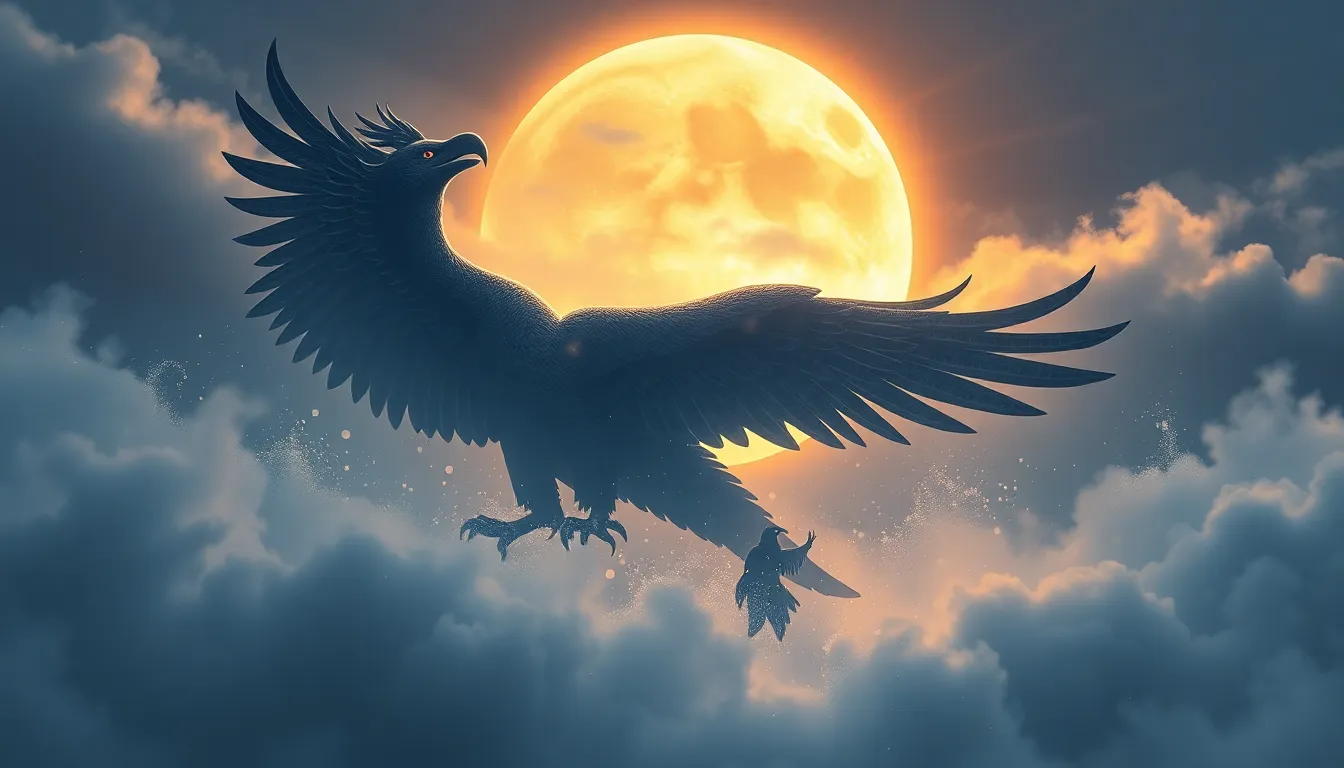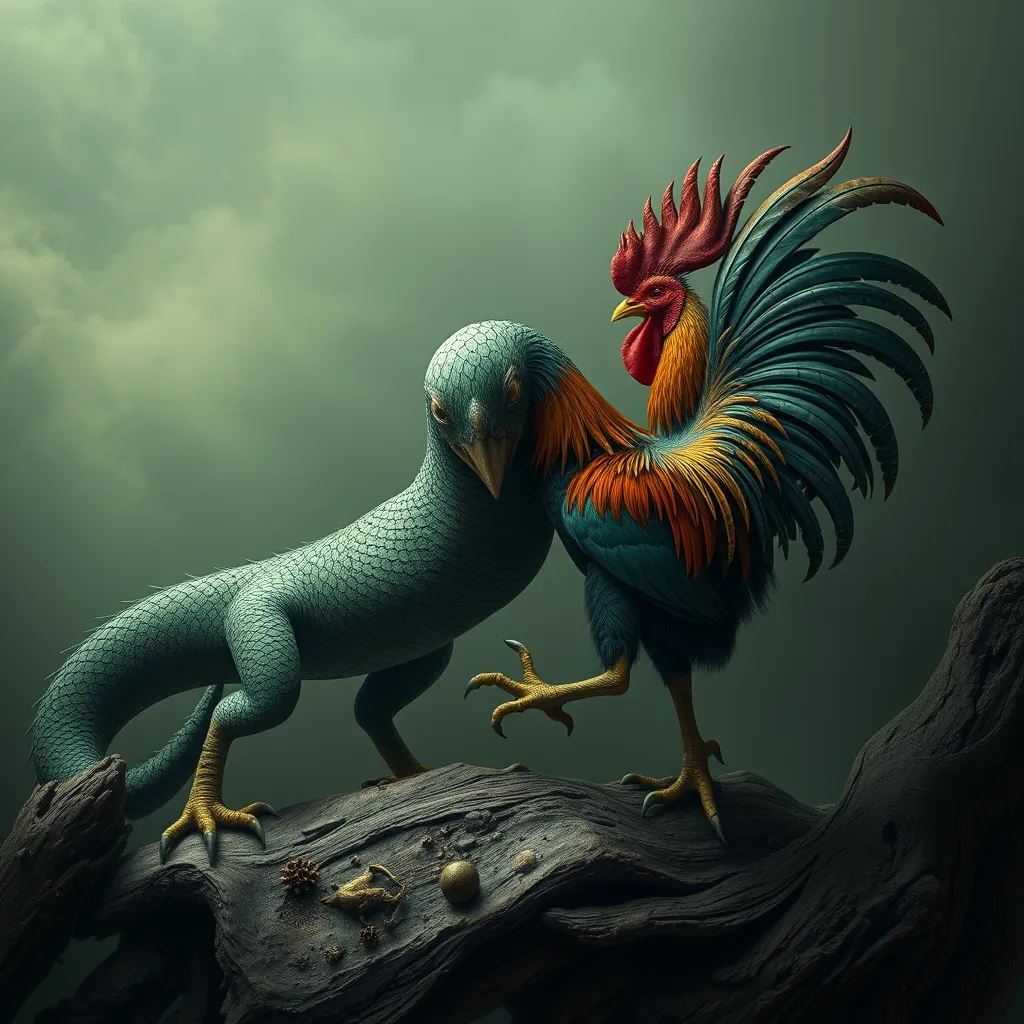The Roc as a Symbol of Luck and Fortune in Chinese Folklore
I. Introduction
The Roc, a legendary bird in Chinese mythology, holds a prominent place in the cultural narratives and folklore of China. This mythical creature is often depicted as a gigantic bird with immense strength, capable of carrying away elephants and other large animals. In Chinese culture, luck and fortune are pivotal concepts that shape the beliefs and practices of its people. The Roc, as a symbol within this context, embodies these ideals of prosperity and strength. This article aims to explore the Roc’s origins, symbolism, role in folktales, artistic representations, and its relevance in modern culture.
II. The Origins of the Roc in Chinese Mythology
The Roc’s origins can be traced back to ancient Chinese texts and historical references. One of the earliest mentions of the Roc is found in the “Classic of Mountains and Seas” (Shan Hai Jing), a compilation of mythological geography and creatures dating back to the 4th century BCE. In these texts, the Roc is described as a colossal bird that can soar to great heights and travel vast distances.
When compared to other mythological creatures, the Roc stands out due to its sheer size and power. Similar to the mythical Phoenix, which symbolizes rebirth and immortality, the Roc represents strength and fortitude. Over time, the imagery of the Roc has evolved, incorporating elements from various cultures and adapting to changing societal values.
III. Symbolism of the Roc
The Roc is widely regarded as a representation of power and strength in Chinese culture. Its gigantic size and ability to dominate the skies symbolize not just physical prowess but also spiritual and emotional resilience. In many stories, the Roc embodies the idea of overcoming challenges and rising above adversity.
Furthermore, the connection between the Roc and good fortune is deeply rooted in cultural interpretations. The Roc is often associated with auspicious events and is believed to bring luck to those who encounter it. This association with fortune is reflected in various aspects of Chinese life, including business practices and personal beliefs.
Cultural interpretations of the Roc’s symbolism include:
- Strength: The Roc represents the power to overcome obstacles.
- Good fortune: It is often seen as a harbinger of prosperity.
- Freedom: The ability to soar high symbolizes liberation from constraints.
IV. The Roc’s Role in Folktales and Legends
Famous stories featuring the Roc have been passed down through generations, each conveying important lessons and morals. One well-known tale involves the Roc’s encounter with a fisherman who, through his cleverness, manages to escape the bird’s clutches. This story emphasizes the values of wit and intelligence over brute strength.
Other legends depict the Roc’s interactions with other mythological beings, such as dragons and immortals, showcasing the complex relationships within the mythological hierarchy. Through these narratives, the Roc serves as a bridge between the human world and the realm of the divine, teaching lessons about humility, respect, and the pursuit of greatness.
Lessons and morals conveyed through these tales include:
- Intelligence over strength: Cleverness can outsmart raw power.
- Respect for nature: Understanding one’s place in the larger ecosystem.
- Perseverance: The importance of resilience in the face of challenges.
V. The Roc in Art and Literature
The Roc’s depiction in traditional Chinese art is both varied and rich. Artists have portrayed the Roc in various forms, often emphasizing its majestic wings and commanding presence. Paintings and sculptures of the Roc are commonly found in temples and homes, symbolizing protection and prosperity.
In contemporary literature and media, the Roc continues to inspire writers and creators. Films, novels, and animations featuring the Roc have emerged, showcasing its enduring influence on popular culture. These modern interpretations often blend traditional symbolism with contemporary themes, reflecting the Roc’s adaptability as a cultural icon.
Analysis of artistic representations reveals:
- Majesty: The Roc is often depicted in flight, emphasizing its grandeur.
- Symbolism: Artistic elements often incorporate symbols of luck and wealth.
- Cultural fusion: Modern representations merge traditional and contemporary styles.
VI. The Roc and Its Connection to Festivals and Celebrations
The Roc’s relevance extends to various festivals and celebrations in Chinese culture, particularly during the Chinese New Year. During this time, images of the Roc are displayed to invoke good luck and fortune for the coming year. The presence of the Roc in decorations and festivities serves as a reminder of the hope and prosperity associated with the new beginnings.
Additionally, the Roc holds symbolic significance during other cultural festivals, where rituals may include offerings and prayers to attract the Roc’s blessings. These practices reflect the deep-rooted belief in the Roc’s power to influence fortune and success.
Rituals and practices involving the Roc include:
- Decorations: Incorporating Roc imagery in festive displays.
- Offerings: Presenting gifts to invoke the Roc’s blessings.
- Storytelling: Sharing tales of the Roc to inspire hope and resilience.
VII. The Roc in Modern Chinese Culture
In modern Chinese culture, the Roc has transformed into a symbol of luck and fortune, prominently featured in popular culture. From merchandise to media, the Roc’s image is utilized to convey positive messages and inspire individuals in their pursuits of success.
Influences on modern beliefs about luck and fortune are evident in various aspects of life, including business practices where the Roc is invoked for prosperity and good fortune. Many entrepreneurs incorporate Roc imagery into branding and marketing strategies, believing it will attract positive outcomes.
The Roc’s impact can be seen in:
- Business: Companies use Roc symbols to promote success.
- Personal practices: Individuals may carry talismans featuring the Roc for luck.
- Media: The Roc appears in films, games, and literature, symbolizing hope and aspiration.
VIII. Conclusion
In summary, the Roc’s significance in Chinese folklore is profound, representing luck, strength, and prosperity. Its enduring legacy continues to influence cultural practices, artistic expressions, and modern beliefs about fortune. As a symbol, the Roc embodies the aspirations of individuals and the collective spirit of a culture that values resilience and hope.
Reflecting on the Roc’s role in Chinese mythology reveals the importance of such symbols in cultural identity. They serve not only as reminders of heritage but also as sources of inspiration for future generations. The Roc, soaring high in the skies of folklore, remains a powerful emblem of luck and fortune that resonates deeply within the hearts of the people.



